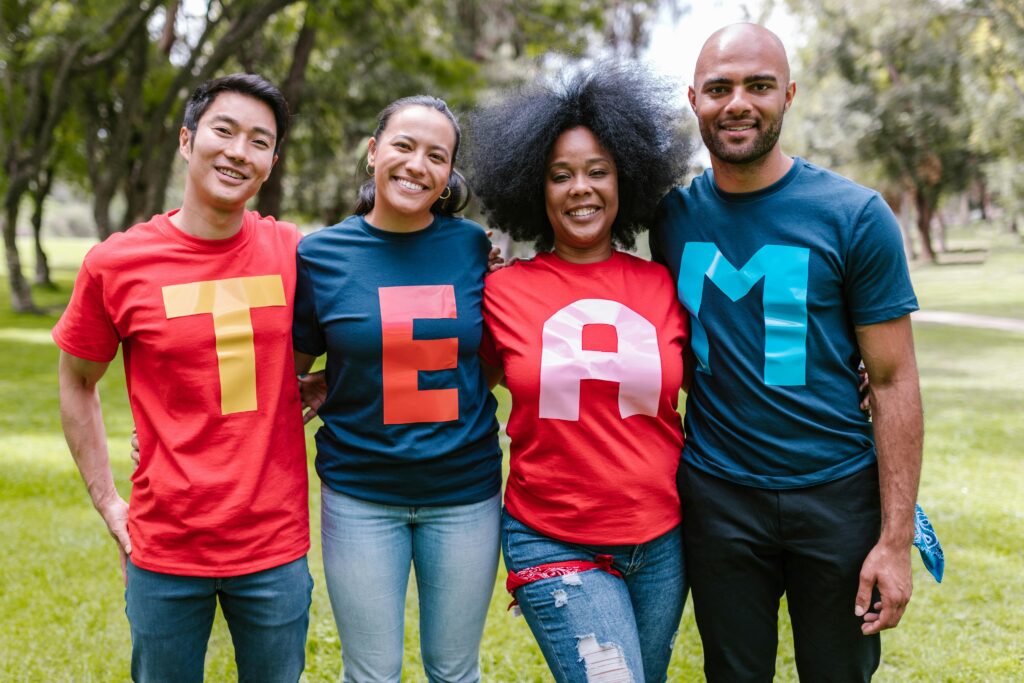Ah, the TEFL classroom! A magical place where the air is thick with the scent of dry-erase markers, the sound of enthusiastic chatter, and the occasional awkward silence as students grapple with the complexities of English. As TEFL teachers, we often find ourselves on a quest to engage our students, boost their confidence, and help them master the language. One of the most effective — and fun — ways to achieve these goals is through collaborative learning. So, grab your favorite mug of coffee (or tea!), and let’s dive into the wonderful world of teamwork!
What is Collaborative Learning?
Before we get into the nitty-gritty, let’s clarify what we mean by collaborative learning. In simple terms, it’s an educational approach where students work together in small groups to achieve a common goal. Think of it as a group project, but without the inevitable “who forgot to do their part?” drama. Collaborative learning encourages communication, critical thinking, and social skills — all while making the learning process more enjoyable.
Why Collaborative Learning?

You might be wondering, “Why should I bother with collaborative learning when I can just lecture my students?” Here are a few compelling reasons to embrace collaboration:
1 Enhanced Communication Skills: Students practice speaking and listening in a low-pressure environment, which is crucial for language acquisition.
2 Peer Support: Learners can help each other understand difficult concepts, making the classroom a supportive community.
3 Increased Engagement: Group activities can be more stimulating than traditional lectures, keeping students motivated and involved.
4: Working together encourages students to think critically and solve problems collaboratively.
5 Cultural Exchange: In diverse classrooms, students can share their backgrounds and perspectives, enriching the learning experience for everyone.
Practical Strategies for Implementing Collaborative Learning
Now that we’ve established the “why,” let’s get into the “how.” Here are some practical strategies you can implement in your TEFL classroom right away:
1 Think-Pair-Share
This classic technique is a great way to kick off a lesson. Here’s how it works: – Think: Pose a question related to the lesson and give students a minute to think about their answers. – Pair: Have students turn to a partner and discuss their thoughts for a few minutes. – Share: Invite pairs to share their ideas with the whole class. This method not only encourages participation but also allows quieter students to express their thoughts in a more comfortable setting.
2 Jigsaw Activities

In a jigsaw activity, each student becomes an “expert” on a specific part of a topic. Here’s how to do it: – Divide your lesson into sections and assign each section to a small group. – Each group researches their section and prepares to teach it to others. – Once they’ve mastered their section, regroup students so that each new group has one member from each original group. – Each student shares their expertise, piecing together the full picture. This method promotes accountability and ensures that every student contributes to the learning process.
3 Role Plays
Role plays are a fantastic way to practice real-life scenarios in a fun and engaging way. Here’s how to incorporate them: – Create scenarios relevant to your lesson (e.g., ordering food at a restaurant, asking for directions). – Assign roles to students and give them time to prepare. – Have them perform their role plays in front of the class or in small groups. Not only does this build language skills, but it also fosters creativity and teamwork.
4 Collaborative Writing
Writing can often feel like a solitary activity, but it doesn’t have to be! Here’s a collaborative twist: – Divide students into small groups and assign them a writing task (e.g., a short story, a dialogue). – Each group collaborates to brainstorm ideas, outline, and write their piece. – Once completed, groups can present their work to the class. This approach not only improves writing skills but also encourages students to share ideas and feedback.
5 Peer Review Sessions

Peer review is a powerful tool for improving writing and critical thinking skills. Here’s how to implement it:
– Have students exchange written work (essays, reports, etc.) with a partner.
– Provide a checklist of criteria for constructive feedback (e.g., clarity, grammar, organization).
– Allow time for students to discuss their feedback and make revisions. This process not only helps students learn from each other but also builds trust and communication skills.
Tips for Success
As with any teaching strategy, there are a few tips to keep in mind to ensure collaborative learning is effective:
Set Clear Expectations: Make sure students understand their roles and responsibilities within the group.
Monitor Group Dynamics: Keep an eye on group interactions to ensure everyone is participating and collaborating.
Be Flexible: Not every group will work perfectly together. Be prepared to adjust groups or activities as needed.
Celebrate Success: Acknowledge and celebrate the achievements of groups to foster a positive learning environment.
Conclusion
Collaborative learning is a powerful tool in the TEFL classroom that can enhance communication, engagement, and critical thinking skills. By implementing strategies like Think-Pair-Share, jigsaw activities, role plays, collaborative writing, and peer review sessions, you can create a dynamic and supportive learning environment where students thrive.
So, gather your students, break out the markers, and let the collaboration begin! After all, teamwork makes the dream work! Happy teaching!

